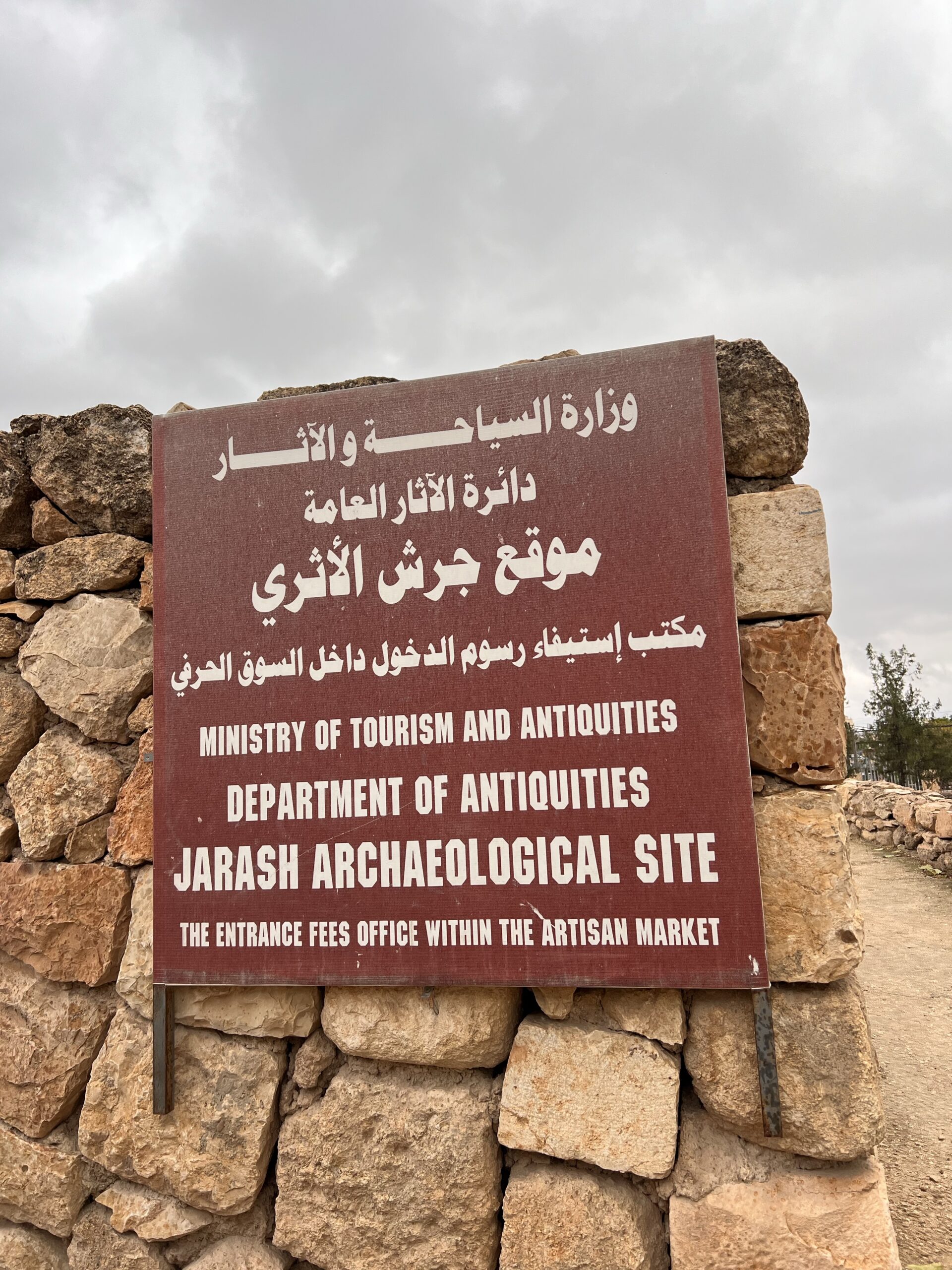
Jerash Archaeological Park is a historical and archaeological site located in Jordan. It is one of the best-preserved and most significant Roman cities in the Eastern Mediterranean. The ancient city of Jerash, known in antiquity as Gerasa, was a thriving urban center during the Roman Empire and later the Byzantine and Umayyad periods.

This main entrance is not in use anymore, so you would need to walk past all the souvenir shops (yes, the audacity to get you to buy stuff, even before visiting this attraction), before you reach the ticket office. You can buy tickets at the window or show your Jordan Pass where they would scan it. The ticket office is no longer in the modern souq with souvenir and antique shops, a post office and a semi-traditional coffeehouse.
The site covers a huge area and can seem daunting at first, especially as there’s virtually no signage. To help the ruins come alive, engage one of the knowledgeable guides (JD20) at the ticket checkpoint to help you navigate the main complex. Walking at a leisurely pace, and allowing time for sitting on a fallen column and enjoying the spectacular views, you can visit the main ruins in a minimum of three to four hours.

At the extreme south of the site is the striking Hadrian’s Arch, also known as the Triumphal Arch, which was built in AD 129 in honour of the visit of Emperor Hadrian.

Behind the arch is the hippodrome, which hosted chariot races in front of up to 15,000 spectators. This large open field was the city’s sporting venue where people could watch gladiator fights and chariot rides. This is not the best picture of the hippodrome as we did not manage to capture the full scale of the forum, but only a small segment of it.

The South Gate, originally one of four along the city wall and built in 130, leads into the city proper. One of the most distinctive sites of Jerash, the forum is unusual because of its shape and huge size (90m long and 80m at its widest point). Fifty-six Ionic columns surround the paved limestone plaza, linking the cardo maximus with the Temple of Zeus.

The colonnaded street is punctuated by the nymphaeum, the main fountain of the city, before giving rise to a superb propylaeum (monumental gateway) and a staircase. It is a monumental fountain adorned with nymph statues, dedicated to the water nymphs.

A colonnaded street that runs north to south through the heart of the city. It was the main street and commercial center, lined with columns and shops.
The South Theatre is a larger theatre with a seating capacity of around 3,000, it was built during the reign of Emperor Domitian.



One of the most important monuments of this archaeological site is the Temple of Zeus. The first worshipping place on the site was probably a cave, used from the seventh to the sixth centuries B.C. This worshipping location was kept through time, and a sanctuary with a wide temenos (sacred courtyard) was built during the early Roman period.
During 2 A.D., the building was heavily altered, and the current great Temple of Zeus was built. The sanctuary, located on top of a hill towering above the city, was preceded by a monumental stairway leading to the temenos. Although erosion, earthquakes, and looting have damaged the site, its scale and magnificence are still striking.

The Temple of Artemis, towering over Jerash at the top of the stairs, was dedicated to the patron goddess of the city, but alas it was dismantled to provide masonry for new churches under Theodorius in 386.

We met a friendly guy at one of the attractions, and he was teaching us how to use the iPhone to take beautiful photos. In the end it was a scam because he demanded money from us. I unwillingly paid him 5JD. If he had made it clear from the start that it was not free, we would have ignored him and walk away. I guess life is difficult in Jordan now as many people cancelled their trip to Jordan due to the war in the neighbouring country, but still this type of low-hand sales tactic should not be condoned.


The annual Jerash Festival, featuring cultural events, music, and performances, is also held in the archaeological park. Jerash Archeological Site is definitely worth a visit, as a day trip from Amman. It is much bigger than the Amman Citadel for sure. While it was raining at the start of the tour, we were glad that the rain slowly stopped and there was some sun out to take some nice photos.

How to get here?
Take a bus or taxi to Tabarbour bus station, where there are frequent public buses to Jerash. Ask a bus driver rather than a taxi driver where the bus leaves so that you would be scammed. Buses leave from the bus station once full. A bus ticket from Amman to Jerash costs 1 JD and the journey takes around 45 minutes.
For me, I had a rental car, so it was no issue driving from Amman to Jerash. Nearing the entrance, there are people trying to charge you for parking (5 JD), but just drive to the official entrance where the carpark is free.
Entrance fee: 12 JD or free with the Jordan Pass, it includes entrance to the archeological museum.
